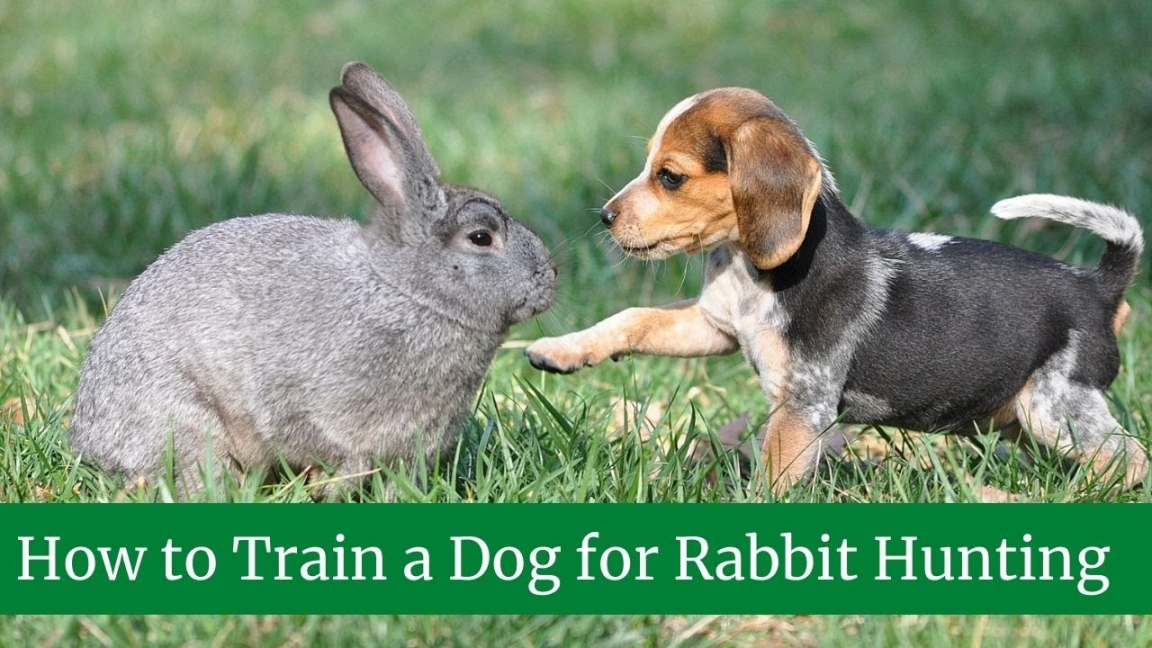How to Train a Rabbit Dog
Understanding the Basics
Training a rabbit dog requires patience, consistency, and a good understanding of your dog’s natural instincts. Here are the steps to train your dog to hunt rabbits:

1. Choose the Right Breed
Not all dog breeds are suitable for rabbit hunting. Breeds like Beagles, Basset Hounds, and Dachshunds are known for their excellent tracking skills and ability to work well in a pack. These breeds are often used as rabbit dogs due to their natural hunting instincts.
2. Socialize Your Dog
Socializing your dog from a young age is crucial to ensure they are well-behaved and comfortable around other dogs and people. Expose your dog to different environments, sounds, and experiences to build their confidence and reduce any fear or aggression.
3. Establish Basic Obedience
Before starting specific rabbit hunting training, ensure your dog has a solid foundation in basic obedience commands such as sit, stay, come, and heel. These commands will be essential during the training process.
4. Introduce Scent Training
Rabbits have a distinct scent, and training your dog to recognize and follow this scent is key to successful rabbit hunting. Start by introducing your dog to the scent of rabbits using scent pads or rabbit hides. Encourage your dog to sniff and locate the scent, rewarding them with praise and treats when they show interest.
5. Use Positive Reinforcement
Positive reinforcement is essential when training your rabbit dog. Reward your dog with treats, praise, and play whenever they exhibit the desired behavior, such as following the scent, staying on track, or locating the rabbit. This positive association will motivate your dog and strengthen their hunting skills.
Advanced Training Techniques
1. Introduce Live Rabbits
Once your dog is proficient in scent training, it’s time to introduce live rabbits. Find a controlled environment, such as a rabbit pen or a designated hunting area, to allow your dog to track and chase real rabbits. Gradually increase the difficulty and distance to challenge your dog’s hunting abilities.
2. Work with Experienced Handlers
If you’re new to rabbit dog training, it can be helpful to seek guidance from experienced handlers or join a local hunting club. These individuals can provide valuable tips and insights to improve your training techniques and ensure the safety and success of your dog.
3. Practice Recall and Control
Recall is a crucial skill for any rabbit dog. Practice calling your dog back to you during training sessions to ensure they respond promptly and reliably. Additionally, work on maintaining control over your dog’s actions while hunting to prevent any unwanted behaviors or potential risks.
4. Maintain Fitness and Health
Rabbit hunting can be physically demanding for your dog. Regular exercise and proper nutrition are essential to maintain their fitness and overall health. Make sure to provide a balanced diet, regular vet check-ups, and opportunities for your dog to exercise and stretch their hunting muscles.
Remember, each dog is unique and may require different training approaches. Always be patient, consistent, and understanding of your dog’s limitations.
Frequently Asked Questions (FAQs)
1. How long does it take to train a rabbit dog?
The training duration can vary depending on the dog’s breed, age, and previous training experience. On average, it can take several months to a year to fully train a rabbit dog.
2. Can any dog be trained to hunt rabbits?
While any dog can be trained to some extent, certain breeds are naturally better suited for rabbit hunting due to their instincts and abilities. It’s important to choose a breed known for its hunting skills.
3. Can I train an older dog to hunt rabbits?
It is possible to train an older dog to hunt rabbits, but the training process may take longer compared to starting with a young puppy. Older dogs may have established behaviors that need to be modified or corrected during training.
4. Is it necessary to use live rabbits during training?
Using live rabbits can be beneficial to simulate real hunting scenarios and test your dog’s skills. However, it’s important to prioritize the safety and well-being of the rabbits involved. Controlled environments and proper precautions should always be taken.
Related Articles…
Copyright Notice:
This website utilizes images found online, all copyrights are retained by their original owners. If you would like an image removed, kindly contact us.